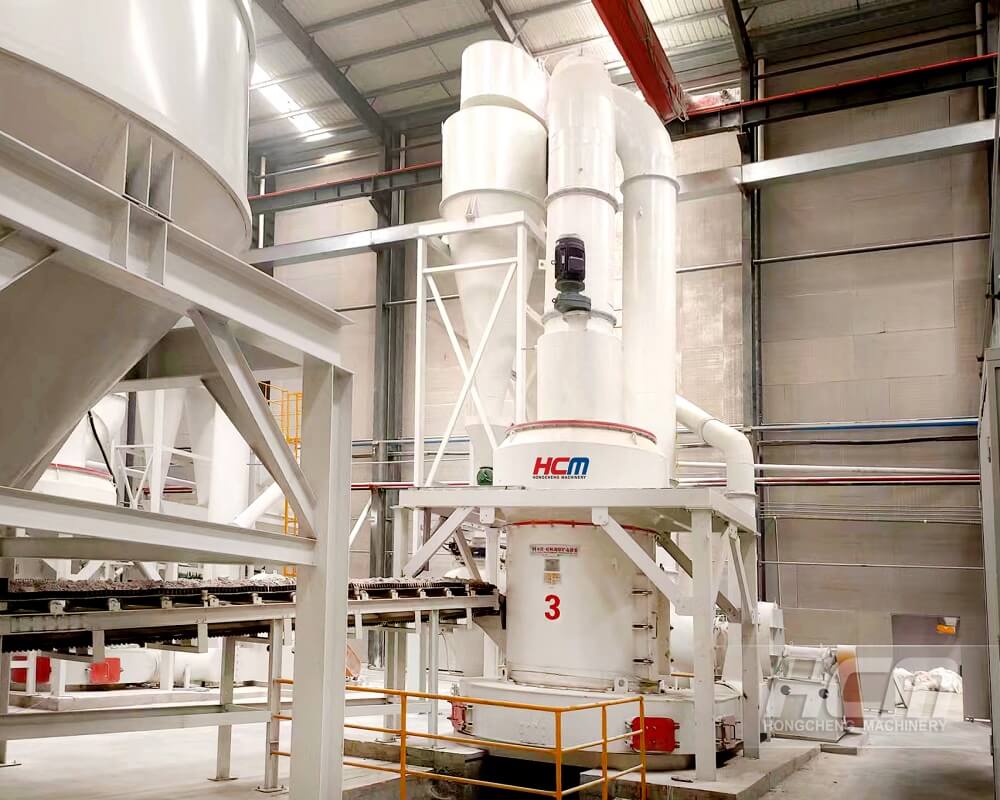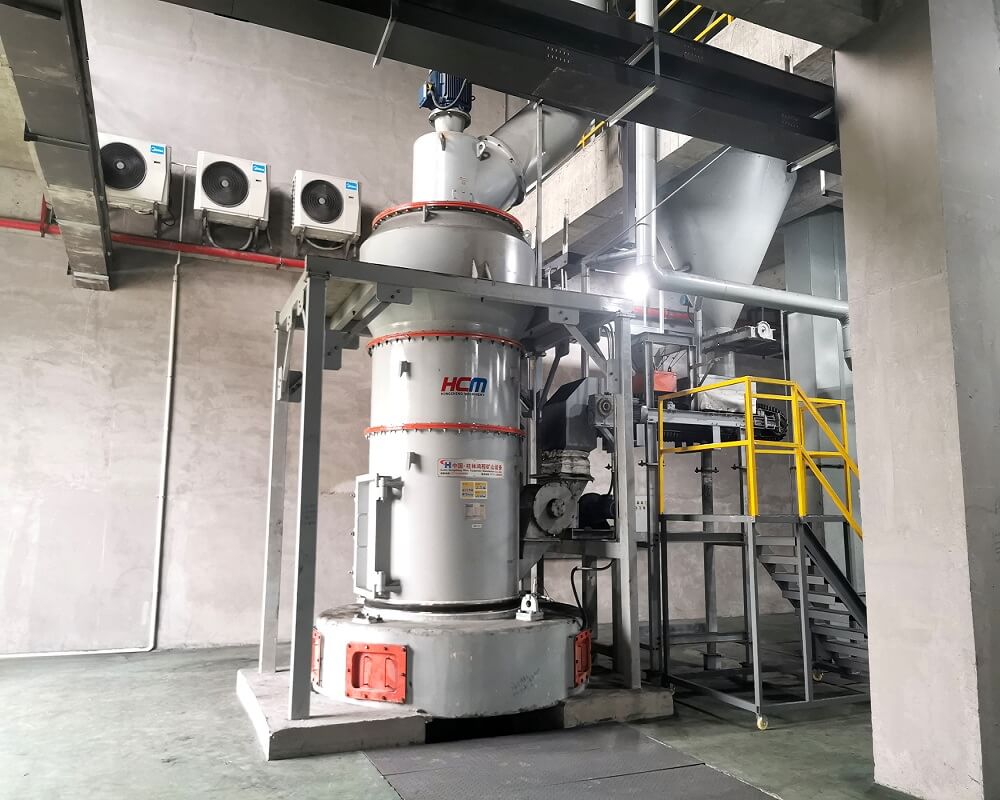Welcome to Guilin HCM Machinery Official WebSite!
Release date: 2023-11-23 13:52:32

At present, the main grinding equipment in the ceramic industry is ball mill. Ball mill is the earliest and most widely used grinding equipment. The biggest disadvantage of ball mill is its low efficiency. Although after hundreds of years of continuous improvement and development, large-scale ball mills and continuous ball mills have been developed, it seems that improving the mechanical performance of ball mills in terms of mechanical structure has almost reached the technical limit.As a new type of ceramic raw material grinding equipment, ceramic raw material vertical mill plays an important role in energy saving and productivity improvement of ceramic raw material grinding. Today, HCM Machinery Vertical Mill for Ceramic Raw Materials will introduce to you the new process and new technology for grinding ceramic raw materials.

There are many types of ceramic raw materials with different moisture contents. In order to ensure the consistency of the formula before and after raw material grinding, Chinese ceramic companies have been using the backward open-flow ball milling process. The biggest advantage of this ball milling process is that it can ensure that the proportion of ceramic raw materials does not change before and after ball milling, and the materials are mixed very evenly. The gap ball mill not only grinds the materials, it also plays the role of mixing the materials evenly. Because of this advantage, the gap ball mill occupies an unshakable position in the grinding process of raw materials in the ceramic industry.However, the biggest disadvantage of this ball milling process is that the material will inevitably be "over-crushed" during the grinding process. The so-called "over-grinding" means that the materials that have reached the fineness requirements are not discharged in time and continue to be ball milled in the machine. This part of the materials must be too fine and consume excess energy. In addition, too fine materials will wrap coarse particles, making it difficult for coarse particles to be directly crushed. As a result, the production capacity of the crusher will be reduced and the unit power consumption will be increased. Therefore, the phenomenon of "over-crushing" should be avoided as much as possible.
The new ceramic raw material grinding technology adopts a two-stage grinding process that combines "vertical pre-grinding" and "ball mill", which effectively avoids the large amount of energy consumed in the initial crushing stage of the ball mill. It reduces the energy consumption of the ball mill, and also greatly shortens the time spent in the entire ball milling process of materials, achieving energy saving in the raw material preparation stage. The so-called vertical pre-grinding is actually an innovation of vertical mill. A combing device and an in-mill screening device are added, and the air separation system is cancelled. The powder is discharged from the lower part of the mill, and the inside of the mill can be ventilated with hot air for drying, which solves the problem that raw materials in the south have high moisture content and cannot be ground.
The grinding principle of vertical pre-grinding belongs to "material bed grinding", or it is also called "material bed extrusion grinding". The advantages of material bed extrusion grinding are more useful work, high mechanical efficiency and less wear. The joint application of vertical pre-grinding and ball mill in the grinding of ceramic raw materials is a technological innovation based on the "traditional single ball mill" processing technology of ceramic raw materials (sand and mud materials) commonly used by ceramic companies.After the sand and gravel materials are ground by vertical pre-grinding, they are then screened. Qualified powder is sent to the ball mill for grinding, and unqualified powder is returned to the vertical pre-grinding for back-grinding. At the same time, the mud is broken, slurried, separated, ground, and entered into the slurry tank. The two-stage grinding process is adopted to avoid large energy consumption of large materials in the initial crushing stage of the ball mill, greatly shortening the entire ball grinding process time of materials, greatly reducing the energy consumption of the ball mill, and achieving energy saving in the raw material preparation stage.The new ceramic raw material grinding process and new technology can easily realize the automation of the raw material processing process. From feeding to discharging and various formula materials can be digitally controlled through computer programming, and every key part has monitoring image points.
Ceramic raw material vertical mill is an efficient and energy-saving new technology for grinding ceramic raw materials, which solves the problem of huge energy consumption in the traditional ceramic production process. Reducing the energy consumption of ceramic raw material grinding and improving the production efficiency of ceramic production are of great significance to the development of the entire ceramic industry. Its main advantages are as follows:
(1) Since there is no direct metal contact between the grinding roller and the grinding disc during the vertical pre-grinding operation, the wear is small, and the finished material meets the requirements of the ceramic production process.
(2) The new process uses: vertical pre-grinding of raw materials with a particle size of ≤50mm. The vertical pre-grinding crushes the raw materials to particles of ≤150 mesh and then sends them to the ball mill for grinding, which can save about 25-40% of energy.
(3) Pioneering the intelligent control of the ceramic raw material processing process: for the ceramic raw material grinding process, a centralized industrial controller is used on the main equipment. Precise control of the processing parameters of ceramic raw materials can realize automated control of the grinding process of ceramic raw materials.
(4) In the new ball milling process, raw materials with a particle size of ≤150-200 mesh (adjustable) are fed into the ball mill. The particle size of the raw materials is relatively equal. In order to further improve the efficiency of grinding raw materials, shorten the ball milling time and reduce the wear of ball stones.
As a manufacturer of vertical mills for ceramic raw materials, HCM's HLM vertical mills are ideal equipment for new processes and technologies for grinding ceramic raw materials. If you have relevant needs, please contact us for consultation. Email:mkt@hcmilling.com